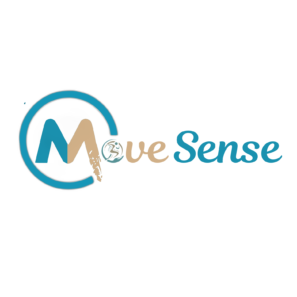What is Vestibular?
The term vestibular pertains to the vestibular system, which is a complex structure in the inner ear that helps regulate balance and spatial orientation. Here’s a more detailed explanation:
Vestibular System Components:
- Vestibule: The central part of the bony labyrinth in the inner ear, comprising the utricle and saccule, which are responsible for detecting linear accelerations and head positions relative to gravity.
- Semicircular Canals: Three fluid-filled tubes arranged in different planes that detect rotational movements of the head.
The vestibular system is responsible for providing the brain with information about motion, head position, and spatial orientation. It helps maintain balance and posture by detecting changes in head movements and sending this information to the brain, which then coordinates with the eyes, muscles, and joints to maintain stability and orientation.
Vestibular Disorders:
- Disorders of the vestibular system can lead to symptoms such as vertigo, dizziness, imbalance, nausea, and difficulty with vision when moving.
- Common vestibular disorders include benign paroxysmal positional vertigo (BPPV), vestibular neuritis, labyrinthitis, and Meniere’s disease.
Vestibular Rehabilitation:
This is a type of physical therapy aimed at alleviating the symptoms of vestibular disorders. It involves specific exercises designed to improve balance and reduce dizziness-related problems.
- Purpose: To help reduce dizziness, improve balance, and prevent falls by promoting central nervous system compensation for inner ear deficits.
- Exercises: May include specific head and body movements, balance exercises, and visual-motor coordination activities.
What to expect during a vestibular therapy?
After a thorough evaluation at MoveSense, our physical therapists collaborate with patients to create a personalized treatment plan. Each plan includes specific head and body movements to be performed both in the clinic and at home. These activities are designed to optimize movement patterns, strengthen muscles, and improve brain-body communication. The prescribed movements are gradually advanced over time to help patients reach their goals and increase their tolerance for movement.

Difference between Vertigo and Dizziness
Vertigo and dizziness are related but distinct sensations that often cause confusion because they are both symptoms related to balance and spatial orientation issues. Here’s a clear differentiation between the two:
Vertigo
Dizziness
- Definition: Vertigo is a specific type of dizziness characterized by the false sensation that you or your surroundings are spinning or moving.
- Causes: It can be caused by problems in the inner ear (e.g., benign paroxysmal positional vertigo, Meniere’s disease), vestibular nerve, brain, or sensory nerve pathways.
- Symptoms: Sensation of spinning or moving, nausea, vomiting, balance problems, nystagmus (rapid, involuntary eye movement).
- Duration: Can last from a few seconds to much longer, depending on the underlying cause.
- Diagnosis and Treatment: Often requires a detailed medical history, physical examination, and sometimes imaging or specialized tests. Treatment depends on the underlying cause and can include medication, physical therapy, and lifestyle changes.
- Definition: Dizziness is a more general term used to describe a range of sensations such as feeling faint, woozy, weak, or unsteady.
- Causes: Can be caused by a variety of issues including dehydration, low blood pressure, low blood sugar, anemia, heart conditions, anxiety disorders, medications, or inner ear problems.
- Symptoms: Lightheadedness, feeling faint, unsteadiness, a sense of floating or wooziness.
- Duration: Can be brief or persistent, depending on the cause.
- Diagnosis and Treatment: Involves evaluating the patient’s medical history, physical exam, and sometimes tests to identify the cause. Treatment varies widely depending on the underlying issue and might involve addressing the primary health condition, lifestyle adjustments, or medications.
How MoveSene helps in Vestibular Therapy - Balance and Falls Therapy?
Vestibular Therapy, also known as Balance Therapy, is a specialized form of physical therapy focused on the vestibular component of the nervous system. This system integrates information from the eyes, inner ears, and extremities to maintain body balance. When this information is incomplete or distorted, it can lead to dizziness, vertigo, difficulty balancing and walking, increased fall risk, challenges with postural control, and muscle and joint flexibility and strength deficits.
At MoveSense, the goal of vestibular therapy is to improve communication between these sensory sources and the brain, thereby reducing dizziness and vertigo and restoring balance to lower the risk of falls. Treatment effectiveness can vary, sometimes requiring as few as 1-2 sessions, depending on the underlying causes. After a thorough evaluation, your physical therapist will develop an individualized treatment plan tailored to your specific needs.
Symptoms that vestibular therapy can address include:
- Balance Problems
- Dizziness
- Benign Paroxysmal Positinal Vertigo (BPPV)
- Blurry vision
- Spinning sensations
- Nausea
- Headaches
- Concentration issues
- Fall Risk
- Difficulty Walking
